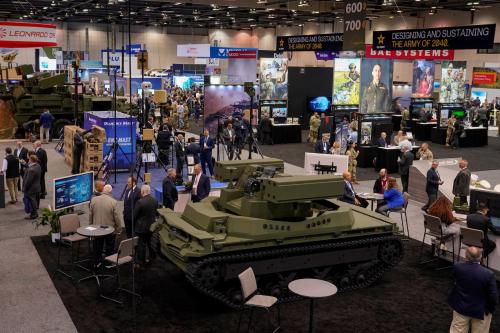Editor’s Note: With the Pentagon directed to save at least $450 billion over the next 10 years, much attention is focused on reducing U.S. commitments overseas. In this New York Times article, Michael O’Hanlon, author of the new book, The Wounded Giant: America’s Armed Forces in an Age of Austerity, offers ideas for the Navy to be more efficient by changing how ships are rotated, manned and used abroad.
Since the Pentagon was directed to save some $450 billion over 10 years, and perhaps far more, much of the conversation in Washington has turned to how America can reduce its overseas commitments. In an interview on Nov. 4, Defense Secretary Leon E. Panetta mentioned, among other possibilities, closing bases and cutting American troops in Europe. But just a few weeks ago, in Asia, he promised that the United States would maintain its forces in the Pacific. How can we downsize our military and sustain key commitments abroad?
One answer is that downsizing must be based on innovation and efficiency, not retrenchment or disengagement. Nor — as many argue that the era of counterinsurgency is ending and ground forces must be scaled down — can all these cuts be made to the Army. Cuts must be spread among all four military services. The Navy, in particular, could come up with about a quarter of the savings.
The Navy maintains a robust global presence with about 285 major warships — including 11 aircraft carriers, 11 large amphibious ships and more than 50 state-of-the-art attack submarines. These ships are mainly deployed in the Mediterranean, the Western Pacific and the Persian Gulf. Since the cold war, the Mediterranean has been de-emphasized to a degree, but the Persian Gulf area has become only more important. The Navy feels stretched thin, and wants to expand the fleet by more than 10 percent, to about 320 ships. However, that is unrealistic in the current budgetary environment. It is also unnecessary, if we are creative in how we use the fleet.
The Navy has figured out how to do more with less in the past. During Ronald Reagan’s presidency, the fleet was double what it is now. But after the cold war, seeing the writing on the wall, the Navy got more innovative. It based some specialty ships like minesweepers overseas, and rotated crews by airplane to allow sailors a break without having to waste time bringing the ships home. It also chose to tolerate gaps in naval presence in some theaters, viewing consistency as less crucial to deterrence than before, and “surging” forces at unpredictable times and places instead. Where some degree of steady presence was viewed as necessary, the Navy sent smaller surface ships or large-deck amphibious vessels rather than aircraft carriers.
Lately, the Navy appears to have stalled a bit in its innovations. While crews are rotated for minesweepers, some coastal patrol craft and the ballistic missile submarine force, the practice has not been extended to other ships. This means that a typical surface combatant, like a cruiser or destroyer, spends about six months in home port training for a deployment, then sails for a six-month mission abroad, consuming perhaps two of those months in transit, and then spends another six-month period back in home port for maintenance and recovery. This is a very inefficient cycle.
By keeping a ship abroad for a couple of years and having two crews share that vessel as well as a training ship at home, the Navy could improve its deployment efficiency by up to 40 percent per ship, accomplishing with about three and a half ships what, on average, might have required five. Focusing on the Navy’s large surface combatants, cruisers and destroyers, this approach could theoretically allow roughly 60 ships (with slightly less than half of them deployed abroad at a time) to maintain the global presence that the Navy says it needs, rather than the 94 ships it is currently pursuing.
Not all ships can be rotated the same way. It is difficult to imagine flying out the crews of aircraft carriers, which can number up to 5,000 sailors (in contrast to the 300 or so on major surface combatants). Some money could be saved on carriers by focusing less on the Mediterranean and substituting large-deck amphibious ships for routine missions.
These changes would take time. We would need to expand access to overseas port facilities for ships that stayed abroad, for maintenance and resupply. There are many reasons for caution: the Navy has to be prepared for new operating regions, like the increasingly ice-free and thus navigable Arctic, and any new plan must allow for reserves of extra ships, in case vessels are sunk in some future conflict.
All that said, these innovations would allow the Navy to shrink its fleet while avoiding pulling back from either the crucial Western Pacific or the conflict-prone Persian Gulf. The savings could be in the ballpark of $15 billion a year, or, since the changes would have to be phased in, more than $100 billion over 10 years. They would require some major changes to Navy culture and habits, but sailors have made bigger changes before, and they are up to the challenge.



Commentary
Op-edA Frugal Fleet to the Rescue
November 14, 2011